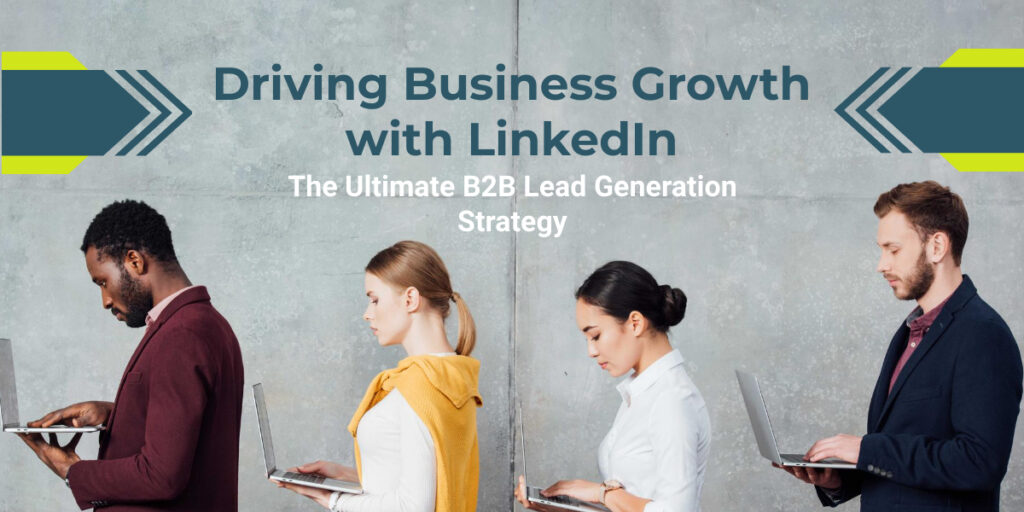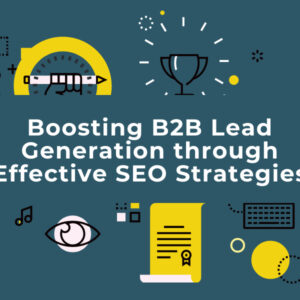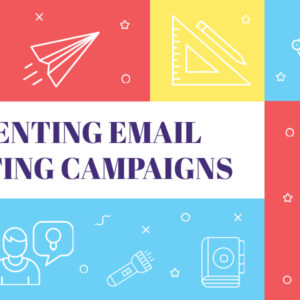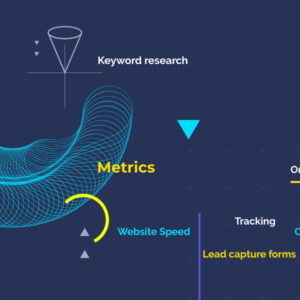
LinkedIn has emerged as the go-to platform for B2B lead generation. With over 700 million professionals and counting, it offers a vast pool of potential leads for businesses. But what sets LinkedIn apart from other social media platforms? Why is it considered the ultimate platform for B2B lead generation?
Why LinkedIn is the Ultimate Platform for B2B Lead Generation
LinkedIn is specifically designed for professionals, making it an ideal platform for B2B lead generation. Unlike other social media platforms, LinkedIn provides a business-focused environment where professionals can connect, network, and engage with each other.
One of the key reasons why LinkedIn is so effective for B2B lead generation is its advanced targeting capabilities. You can narrow down your search to specific industries, job titles, company sizes, and more, ensuring that your message reaches the right audience.
Moreover, LinkedIn provides a wealth of information about its users, including their professional background, skills, and interests. This data can be leveraged to personalize your lead generation efforts and tailor your messaging to resonate with your target audience.
Understanding the B2B Lead Generation Process on LinkedIn
To effectively generate B2B leads on LinkedIn, it’s crucial to understand the lead generation process and how it differs from traditional methods. On LinkedIn, the process typically involves three main steps: optimizing your profile, building a network of connections, and engaging with prospects.
First, you need to optimize your LinkedIn profile to attract and engage potential leads. This includes optimizing your headline, summary, and experience sections with relevant keywords and compelling content. A well-crafted profile will not only make you more discoverable but also establish your credibility as a thought leader in your industry.
Next, it’s essential to build a network of qualified connections on LinkedIn. These connections are potential leads that you can engage with and nurture over time. Focus on connecting with professionals who are relevant to your industry and target audience. Quality connections are more valuable than quantity, so prioritize building relationships with individuals who are likely to be interested in your products or services.
Once you have a solid network, it’s time to engage with your prospects. This can be done through various methods, such as sharing valuable content, participating in LinkedIn groups, and reaching out to individuals directly. The key is to provide value and establish yourself as a trusted resource in your industry. By engaging with prospects, you can build relationships and eventually convert them into qualified leads.
Optimizing Your LinkedIn Profile for Lead Generation
Your LinkedIn profile is the foundation of your B2B lead generation strategy. It’s the first impression potential leads will have of you, so it’s crucial to optimize it for maximum impact.
Start by crafting a compelling headline that clearly communicates what you do and the value you offer. Use keywords that your target audience is likely to search for, making it easier for them to find you.
In the summary section, highlight your expertise, achievements, and the problems you solve for your clients. Be concise and compelling, focusing on the benefits you bring to the table.
When it comes to the experience section, provide detailed information about your past roles, responsibilities, and accomplishments. Use bullet points to make it easy to skim and highlight your key achievements.
Don’t forget to include relevant skills and endorsements. These not only showcase your expertise but also make it easier for others to find you when searching for specific skills.
Lastly, make sure to include a professional-looking profile picture and a background image that reflects your brand. Visuals can leave a lasting impression and make your profile more appealing to potential leads.
Building a Network of Qualified Connections on LinkedIn
Building a network of qualified connections on LinkedIn is essential for successful B2B lead generation. Here are some strategies to help you grow your network effectively:
- Leverage your existing contacts: Start by connecting with colleagues, clients, and industry peers. These individuals are already familiar with your work and are more likely to accept your connection request.
- Join relevant LinkedIn groups: Search for groups that are relevant to your industry and target audience. Participate in discussions, share valuable insights, and connect with other group members who share similar interests.
- Engage with your second-degree connections: Don’t limit yourself to just your immediate network. Explore your second-degree connections and reach out to individuals who could be potential leads. Personalize your connection request and explain why you would like to connect.
- Attend industry events and conferences: Take advantage of LinkedIn’s events feature to find industry events and conferences. Connect with attendees before and after the event to expand your network and generate leads.
Remember, building a network takes time and effort. Focus on quality connections rather than quantity, and nurture your relationships to turn them into valuable leads.
Leveraging LinkedIn Groups for B2B Lead Generation
LinkedIn groups are a powerful tool for B2B lead generation. They provide a platform for professionals to connect, share insights, and discuss industry-related topics. Here’s how you can leverage LinkedIn groups to generate leads:
- Join relevant groups: Search for groups that align with your industry and target audience. Look for active groups with engaged members.
- Participate in discussions: Engage with other group members by sharing valuable insights, asking questions, and providing helpful answers. This positions you as a thought leader and increases your visibility within the group.
- Share valuable content: Share articles, blog posts, and other relevant content that can benefit group members. This not only establishes your expertise but also drives traffic to your profile and website.
- Connect with group members: When engaging with group members, don’t hesitate to send connection requests to individuals who could be potential leads. Personalize your request and explain why you would like to connect.
- Start your own group: If you can’t find a group that suits your needs, consider starting your own. This allows you to create a community around your brand and attract like-minded professionals who are interested in your industry.
LinkedIn groups offer a unique opportunity to connect with your target audience, establish your authority, and generate quality leads. Make the most of this feature by actively participating and providing value to group members.
Using LinkedIn’s Advanced Search Features to Find Prospects
LinkedIn’s advanced search features are a goldmine for B2B lead generation. They allow you to narrow down your search and find prospects who match your ideal customer profile. Here’s how you can use these features effectively:
- Use Boolean operators: LinkedIn’s search bar supports Boolean operators such as AND, OR, and NOT. This allows you to create complex search queries and refine your results. For example, you can search for “marketing AND manager” to find professionals who have both marketing and managerial roles.
- Filter by location: If your business operates in a specific geographical area, use the location filter to find prospects in that region. This is especially useful for local businesses or those targeting specific markets.
- Target specific industries: LinkedIn allows you to search for professionals in specific industries. This is particularly beneficial if you offer products or services that cater to a particular industry.
- Refine by job title and seniority: If you have a clear understanding of your target audience’s job titles and seniority levels, use these filters to narrow down your search. This ensures that your message reaches decision-makers and influencers within organizations.
- Save your searches: LinkedIn allows you to save your search queries and receive notifications when new profiles that match your criteria are added. This saves you time and ensures that you don’t miss out on potential leads.
By leveraging LinkedIn’s advanced search features, you can find highly targeted prospects who are more likely to be interested in your offerings. Take the time to explore these features and experiment with different search combinations to maximize your lead generation efforts.
Creating and Sharing Valuable Content on LinkedIn
Creating and sharing valuable content on LinkedIn is a powerful way to attract and engage potential leads. By providing valuable insights and thought leadership, you can establish yourself as an authority in your industry and build trust with your audience. Here are some tips for creating and sharing content on LinkedIn:
- Identify your target audience: Before creating content, it’s essential to understand who you’re targeting. What are their pain points? What challenges do they face? This will help you create content that resonates with your audience and provides solutions to their problems.
- Choose the right content format: LinkedIn supports various content formats, including articles, videos, and images. Choose the format that best suits your message and resonates with your audience. Experiment with different formats to see what works best for your business.
- Provide actionable insights: Your content should provide actionable insights and practical tips that your audience can implement in their professional lives. This positions you as a valuable resource and encourages engagement with your content.
- Optimize your content for search: Use relevant keywords in your content to make it more discoverable. This includes optimizing your headline, summary, and body text. Be sure to include keywords that your target audience is likely to search for.
- Engage with your audience: When sharing content on LinkedIn, don’t just post and forget. Monitor the comments and engage with your audience. Respond to questions, acknowledge feedback, and foster discussions around your content. This helps build relationships and trust with your audience.
Remember, consistency is key when it comes to content creation. Develop a content calendar and commit to regularly sharing valuable content on LinkedIn. Over time, you’ll build a loyal following and attract quality leads to your business.
Engaging with Prospects and Nurturing Relationships on LinkedIn
Engaging with prospects and nurturing relationships is crucial for B2B lead generation on LinkedIn. Here are some strategies to help you effectively engage with your prospects:
- Personalize your connection requests: When reaching out to potential leads, avoid generic connection requests. Personalize each request and explain why you would like to connect. This shows that you have taken the time to research and understand their needs.
- Send personalized messages: Once you’ve connected with a prospect, don’t jump straight into a sales pitch. Instead, send a personalized message introducing yourself and expressing your interest in their work. This helps to establish a rapport and sets the stage for future conversations.
- Share relevant content: When you come across articles, blog posts, or other content that you think would be valuable to your prospects, share it with them. This demonstrates your thoughtfulness and positions you as a helpful resource.
- Engage with their content: Show your prospects that you’re interested in their work by engaging with their content. Like, comment, and share their posts to show your support and start a conversation.
- Offer value before asking for anything: Before making any sales pitches or asking for a meeting, provide value to your prospects. This could be in the form of a free consultation, an industry report, or a helpful resource. By offering value first, you build trust and increase the likelihood of a positive response.
Remember, the goal is to build relationships, not just make a quick sale. Take the time to understand your prospects’ needs and tailor your interactions accordingly. By nurturing relationships, you’ll increase the chances of converting prospects into loyal customers.
Measuring and Tracking the Success of Your LinkedIn Lead Generation Strategy
To ensure the success of your LinkedIn lead generation strategy, it’s crucial to measure and track your results. Here are some key metrics to consider:
- Number of leads generated: Keep track of the number of leads generated through LinkedIn. This will give you an idea of the effectiveness of your lead generation efforts.
- Conversion rate: Measure the percentage of leads that convert into customers. This will help you identify any gaps in your lead nurturing process and make necessary adjustments.
- Engagement metrics: Track the engagement metrics of your LinkedIn posts, such as likes, comments, and shares. This will give you insights into the type of content that resonates with your audience.
- Profile views: Monitor the number of profile views you receive on LinkedIn. An increase in profile views indicates that your optimization efforts are paying off and that more people are discovering your profile.
- Referral traffic: If you have a company website or blog, track the amount of referral traffic coming from LinkedIn. This will help you understand the impact of your LinkedIn lead generation efforts on your overall web presence.
By regularly measuring and tracking these metrics, you can identify areas for improvement and make data-driven decisions to optimize your LinkedIn lead generation strategy.
Common Mistakes to Avoid When Using LinkedIn for B2B Lead Generation
While LinkedIn offers immense potential for B2B lead generation, there are common mistakes that businesses often make. Here are some pitfalls to avoid:
- Being too salesy: LinkedIn is not the place for aggressive sales pitches. Instead, focus on building relationships and providing value to your audience. The sales will naturally follow.
- Ignoring engagement: Engagement is key to successful lead generation on LinkedIn. Don’t just post content and disappear. Engage with your audience, respond to comments, and foster discussions.
- Not personalizing your outreach: Generic connection requests and messages are a surefire way to turn off potential leads. Take the time to personalize your outreach and show that you’ve done your research.
- Overlooking the power of groups: LinkedIn groups are an untapped resource for many businesses. Join relevant groups, participate in discussions, and establish your authority.
- Neglecting to measure results: Without measuring and tracking your results, it’s difficult to know if your LinkedIn lead generation strategy is effective. Make sure to regularly measure key metrics and adjust your approach as needed.
By avoiding these common mistakes, you can maximize the potential of LinkedIn for B2B lead generation and drive business growth.
Conclusion: Unlocking the Full Potential of LinkedIn for Business Growth
LinkedIn is a powerful tool for B2B lead generation, offering a wealth of opportunities to connect with potential leads and drive business growth. By optimizing your profile, building a network of qualified connections, leveraging groups, utilizing advanced search features, creating valuable content, engaging with prospects, and measuring your results, you can unlock the full potential of LinkedIn for your business.
Remember, B2B lead generation on LinkedIn is a long-term strategy that requires time, effort, and consistency. Stay committed, provide value, and nurture your relationships. With the right approach, LinkedIn can become your ultimate platform for B2B lead generation and drive significant business growth.






